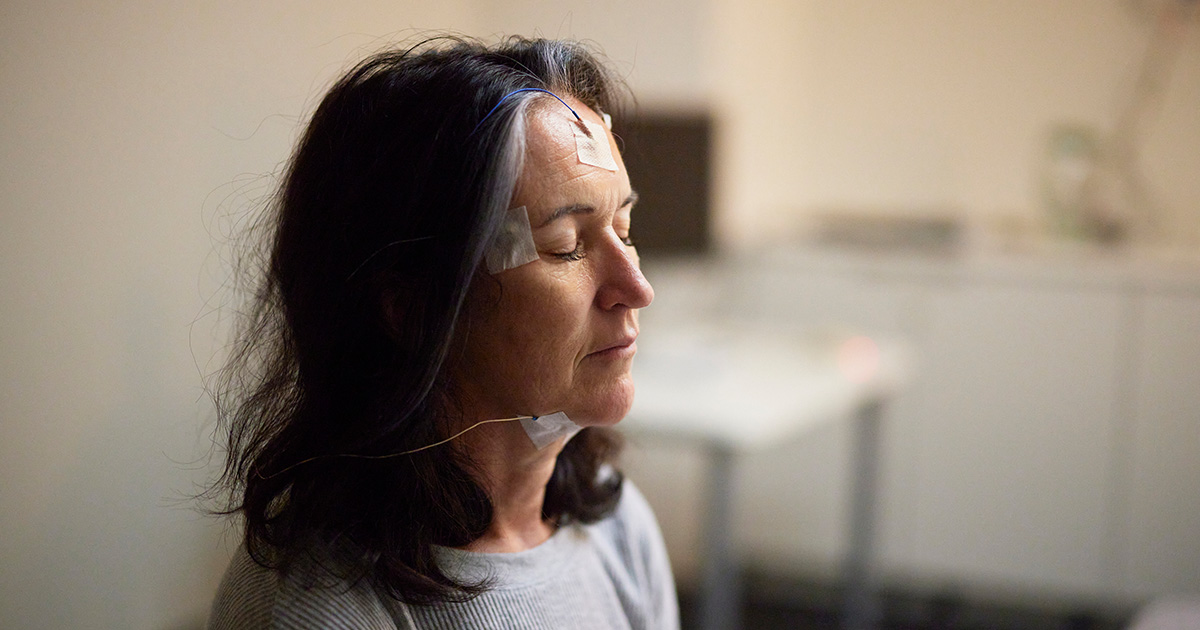The Woolcock Institute of Medical Research

The struggle to stay awake
Getting more than enough hours of sleep but still feeling excessively sleepy is the hallmark feature of hypersomnia, or hypersomnolence. In most cases, it relates to a sleep disorder like sleep apnea but can also be due to having a “sleepy brain” as in narcolepsy or idiopathic hypersomnia (IH). Less commonly it can be a symptom of head injury or excessive use of medication that promotes sleepiness.
SLEEPINESS THAT NEVER SUBSIDES
Idiopathic hypersomnia (IH) is a distinct medical condition where patients are excessively sleepy and may sleep very long hours with a sense of “brain fog” even when awake. These patients do not present with features characteristic of other disorders of hypersomnolence like narcolepsy type 1 or type 2. IH is a disorder of the nervous system but, beyond that, scientists don’t know exactly what causes it. Despite more than nine hours’ sleep, patients with IH wake feeling drowsy and rarely experience “typical” energy levels. They can experience brain fog, confusion, disorientation, sluggishness, forgetfulness, irritability, lack of coordination, and an inability to focus. It’s frustrating and debilitating, and patients often require stimulant medications to increase alertness during the day.
Idiopathic Hypersomnia Awareness Week started on Saturday 1 June and continues until Friday 7 June. Its theme this year is empowering the IH community to share their experiences. In the past year, research at the Woolcock has offered sleepy patients some hope, with the early results of a clinical trial investigating a new drug to treat both idiopathic hypersomnia and narcolepsy showing promise.
WORLD-FIRST RESEARCH
Woolcock researchers were recently involved in a world-first proof-of-concept study evaluating ALKS 2680, a once-daily oral orexin 2 receptor agonist. Orexin is a brain messenger that promotes alertness and levels are reduced in narcolepsy type 1. It is also theorised that orexin signalling is abnormal in narcolepsy type 2 and idiopathic hypersomnia. The research involved our extensive sleep testing facilities and expert support from all our staff including physicians, clinical trials staff and sleep technologists allowing for comprehensive testing of research patients to prove the drug’s effectiveness.
“The Alkermes study was complex and involved detailed screening and 10-day stays for patients housed in our sleep lab with testing of how the new medication would promote alertness using maintenance of wakefulness testing (MWT). The capacity of our centre enabled us to complete the study in Sydney. There are probably only a few centres worldwide able to provide these investigations over a time period of less than a year,” says Professor Ron Grunstein, the Woolcock’s Sleep and Circadian research leader and the study’s principal investigator.
“These drugs have the potential to keep people awake like nothing else before – it will make a huge difference to their quality of life if this research programme is successful.”
Want to stay up to date with our research on sleep and respiratory conditions?
Sign up to our monthly newsletter
HOPE ON THE HORIZON
The early results with this new drug, released in April, reported clinically meaningful and statistically significant improvements from baseline testing compared to placebo at all doses tested.
Importantly, patients with all forms of hypersomnia including IH had a clear improvement in wakefulness with alertness levels being essentially normal at the highest doses. The drug was well-tolerated by participants.
"The magnitude and durability of effect of this drug seen in this proof-of-concept study in patients with narcolepsy type 1 and 2 and idiopathic hypersomnia is exciting,” said Professor Grunstein. "New treatment options are needed, and orexin agonists have the potential to transform the current treatment landscape."
Woolcock sleep physician Professor Brendon Yee says: “IH has, in the past, been poorly understood and commonly ignored with limited treatment options. Patients often spend years even getting a diagnosis and it has an enormous effect on their ability to lead normal lives. There are now potentially promising options for them on the horizon.”
The Woolcock Narcolepsy and Excessive Sleepiness Clinic offers a range of services for people who have or suspect they may have idiopathic hypersomnia or other disorders of hypersomnolence. Having our clinicians involved at the forefront of this ground-breaking research means that this research can be translated into the very best clinical care for patients.










